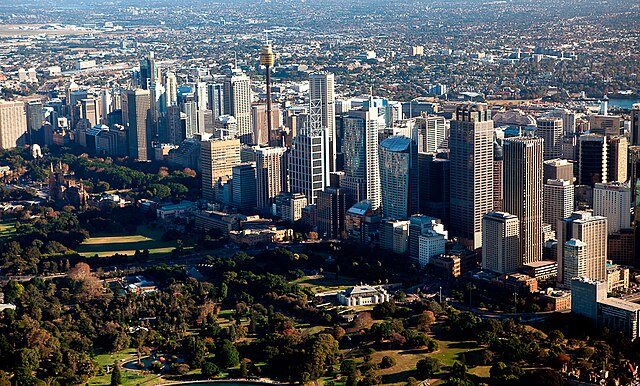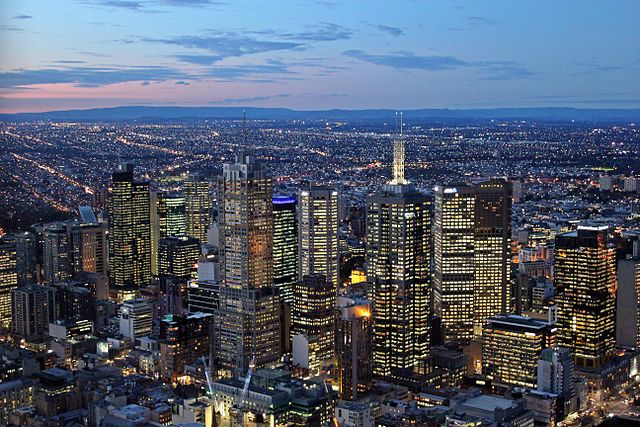Downtown is a term primarily used in North America by English speakers to refer to a city's sometimes commercial, cultural and often the historical, political, and geographic heart. It is often synonymous with its central business district (CBD). Downtowns typically contain a small percentage of a city's employment. Sometimes, smaller downtowns are surrounded by lower population densities and lower incomes than suburbs. It is often distinguished as a hub of public transit and culture.
Midtown Manhattan (foreground) in New York City is the largest central business district in the world and the most populous residential district in the Western Hemisphere.
Lower Manhattan, also known as the Financial District, New York City's original downtown, is the fourth-most populous downtown in the United States, and is often the colloquial signification of the term Downtown.
Downtown Manhattan in 1893; looking up Broadway from Barclay Street
Center City, Philadelphia, the second-most populous downtown in the United States
Central business district
A central business district (CBD) is the commercial and business center of a city. It contains commercial space and offices, and in larger cities will often be described as a financial district. Geographically, it often coincides with the "city center" or "downtown". However, these concepts are not necessarily synonymous: many cities have a central business district located away from its commercial and/or cultural center and/or downtown/city center, and there may be multiple CBDs within a single urban area. The CBD will often be highly accessible and have a large variety and concentration of specialized goods and services compared to other parts of the city.
Midtown Manhattan, the largest central business district in the United States
Sydney central business district
Melbourne central business district
Brisbane central business district








